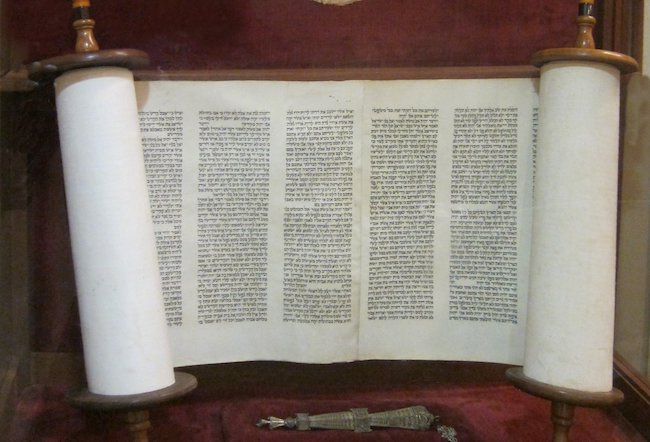Every male Jew should copy or buy Torah books and in particular a Torah scroll; see 270:1-2. Such books must not be sold unless the proceeds are needed for Torah study or for other important purposes such as marriage or ransom (270:1-2).
A Torah scroll may be written only on the skin of a kosher type of animal or bird (271:1), preferably on the inner surface of the outer part of the skin (see 271:3-4). The skin must be cured by a Jew for that purpose (271:1); on the method of curing see 271:2. The skin must be ruled (271:5) and the writing must be done with the proper type of black ink (see 271:6) and with a reed pen (271:7). The writing must be done intentionally (274:1) by a religious adult male Jew (see 281:1-5). Each word must be read aloud from a written text before writing it (274:2).
The height of the scroll should be equal to its circumference (272:1) and the lines of writing should be 30 characters long (272:2). Each sheet of skin should contain between three and eight columns of writing (272:3) and each column should contain between 42 and 60 lines (see 275:6). The last sheet may contain fewer columns, but the writing in the last column must end in the middle of the bottom line (272:3-4).
The sheets must be sewn together with the sinews of a kosher type of animal; see 278:1-4. There should be two-inch margins between consecutive columns (in addition to space for stitching the sheets together and rolling the first and last sheets on sticks; see 278:2), a three-inch margin at the top of each column and a four-inch margin at the bottom (273:1). There should be a line-width of space between consecutive lines and four blank lines between consecutive books of the Torah (273:1).
The letters should not vary in size (see 273:2-3) and the edges of the columns should be as straight as possible (see 273:3-5). If a word was omitted it may be inserted between the lines but not between the columns (273:6;276:1). The letters should be well-formed (274:3,6), legible (274:5), and separated by small spaces (274:4) and there should be one-letter spaces between words (274:4). The words must be correctly spelled (see 275:6) and there must be no punctuation (274:7). There must be paragraph spaces nine or more letters long in the middles and at the ends of many specific lines; see 275:1-2. On the arrangement of the lines of the songs in Exod. 15:1-19 and Deut. 32:1-43 see 275:3-5.
Shulchan Aruch, Copyright (c) 2000 ProjectGenesis, Inc.


